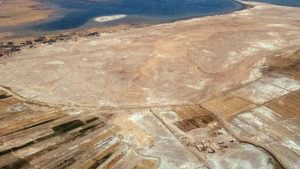Astronauts Study Artificial Intelligence, Human Nervous System; Install New Hardware Aboard ISS
The absence of gravity in space makes a lot of things tricky and fascinating for the astronauts in the International Space Station (ISS). But, the zero-gravity also gives an opportunity for the astronauts to explore phenomena in conditions that are hard to create on Earth. Recently, crew members of the Expedition 67 spent their day analysing artificial intelligence (A…

Astronauts aboard the International Space Station (ISS) — the modular space station orbiting the Earth — conducted experiments on Tuesday to explore space physics, artificial intelligence, the human nervous system, and the effect of microgravity on the human body in space. Conditions in space, such as zero gravity, allow astronauts the ability to explore phenomena in conditions that are hard to create on Earth. Their observations could help advance professions such as communications, aerospace, medicine, and astronomy, according to NASA.
On July 5 at the International Space Station, NASA revealed Flight Engineer Bob Hines worked on radish seeds in the Columbus laboratory module. The seeds were germinating for the eXposed Root On-Orbit Test System (XROOTS) space botany study. NASA’s XROOTS investigation uses aeroponic and hydroponic techniques to grow plants and doesn’t require soil or any other medium of growth.
The soilless technique is used to nourish and produce crops on a large scale for future space missions. Hines also configured the NanoRacks Bishop airlock along with other flight engineers Kjell Lindgren and Jessica Watkins. The trio prepared the airlock for its first trash disposal and dumped a trash container inside it. They got the airlock ready for depressurising and closed its hatch in the tranquillity module. Now, the container will head towards the Earth’s atmosphere, once ejected, and the trash will be safely disposed of on Saturday.
Besides this, three Russian cosmonauts assessed the effects of weightlessness on the human body through a series of human experiments. Commander Oleg Artemyev attached sensors to himself and monitored his cardiac activity while working in zero gravity. Meanwhile, Flight Engineers Denis Matveev and Sergey Korsakov focussed on the impact of stresses of spaceflight on the human immune system. They collected their saliva and blood samples and analysed them to understand the effects.
Aboard the space station, the astronauts also conducted an advanced experiment using artificial intelligence. Astronaut Samantha Cristoforetti of the European Space Agency (ESA) set up a Microgravity Science Glovebox and serviced components as part of the Intelligent Glass Optics space physics study.
The experiment was aimed at adapting the Earth-bound techniques to the space environment. This is said to be helpful in improving Earth and Space-based technologies such as aerospace, medicine, and communications.




